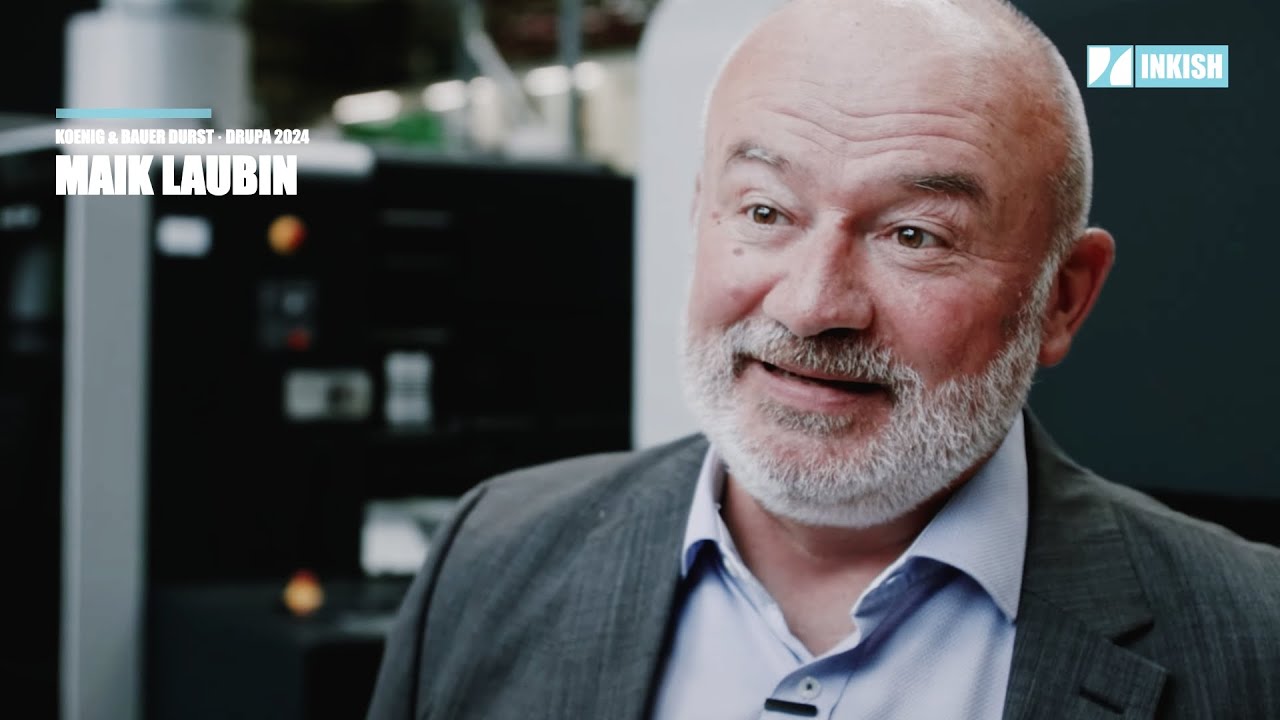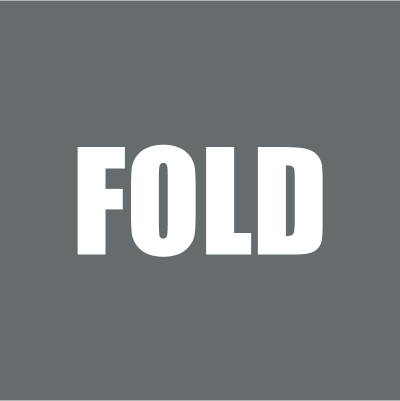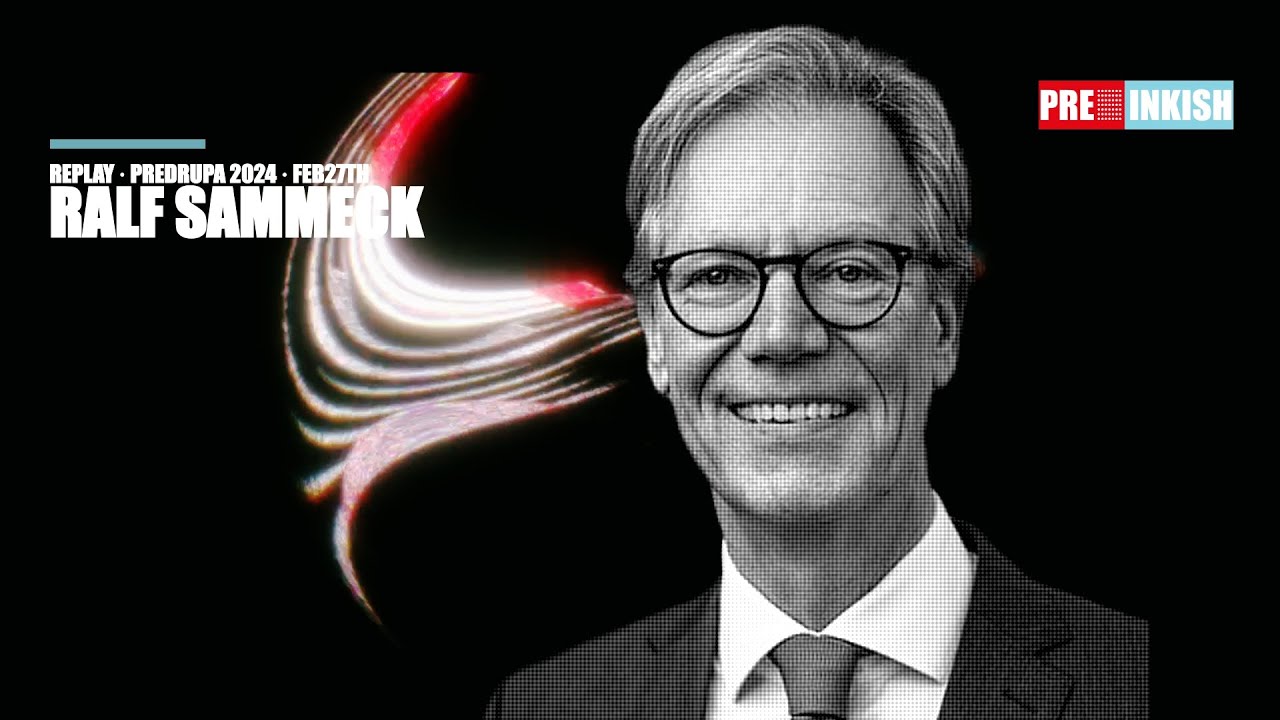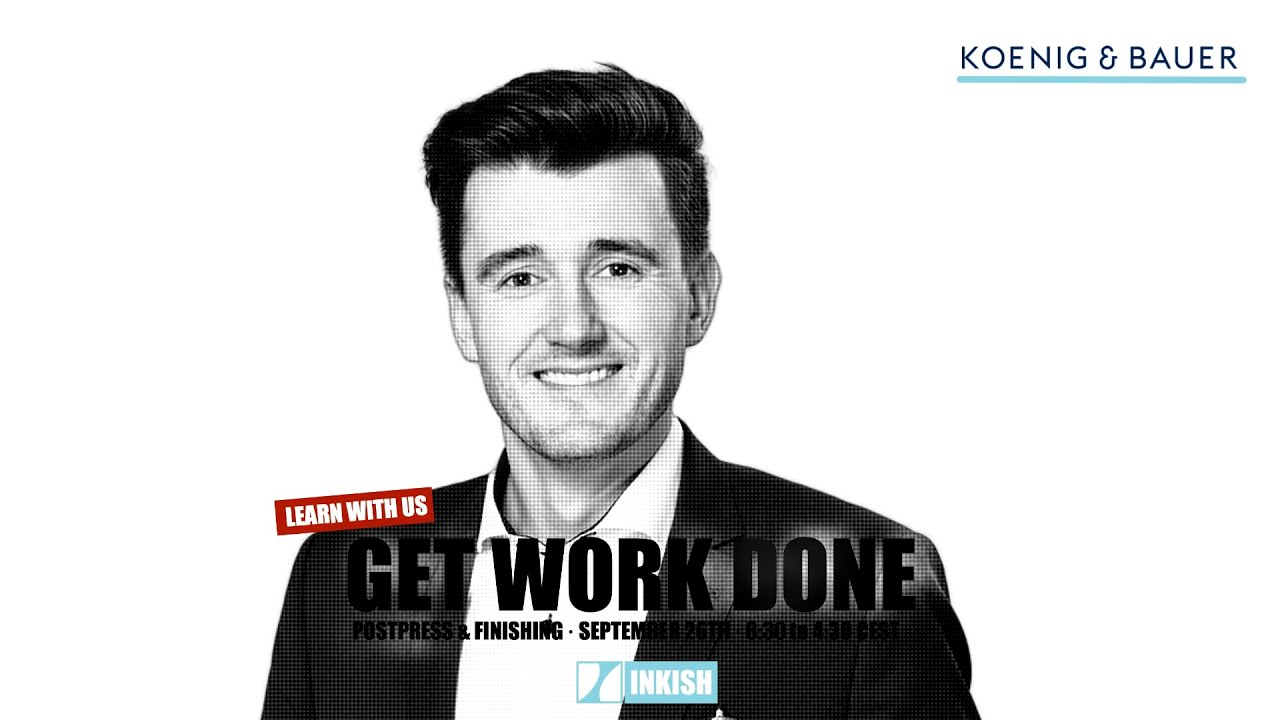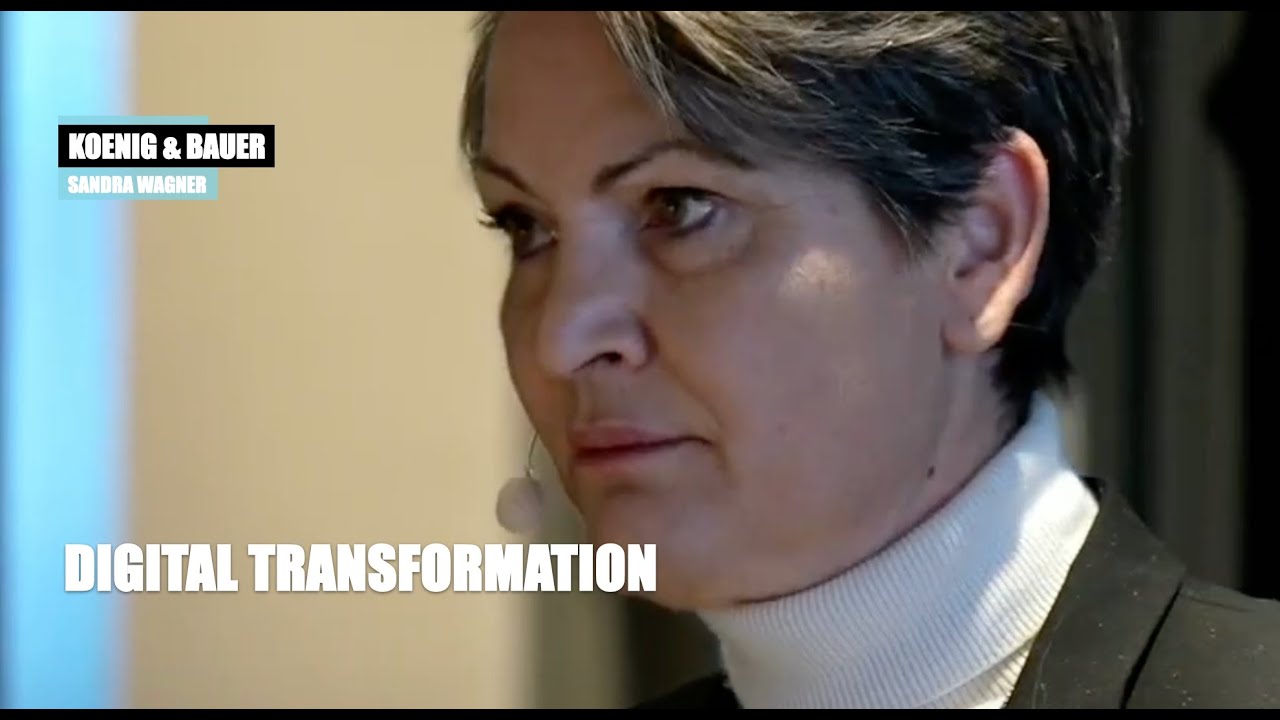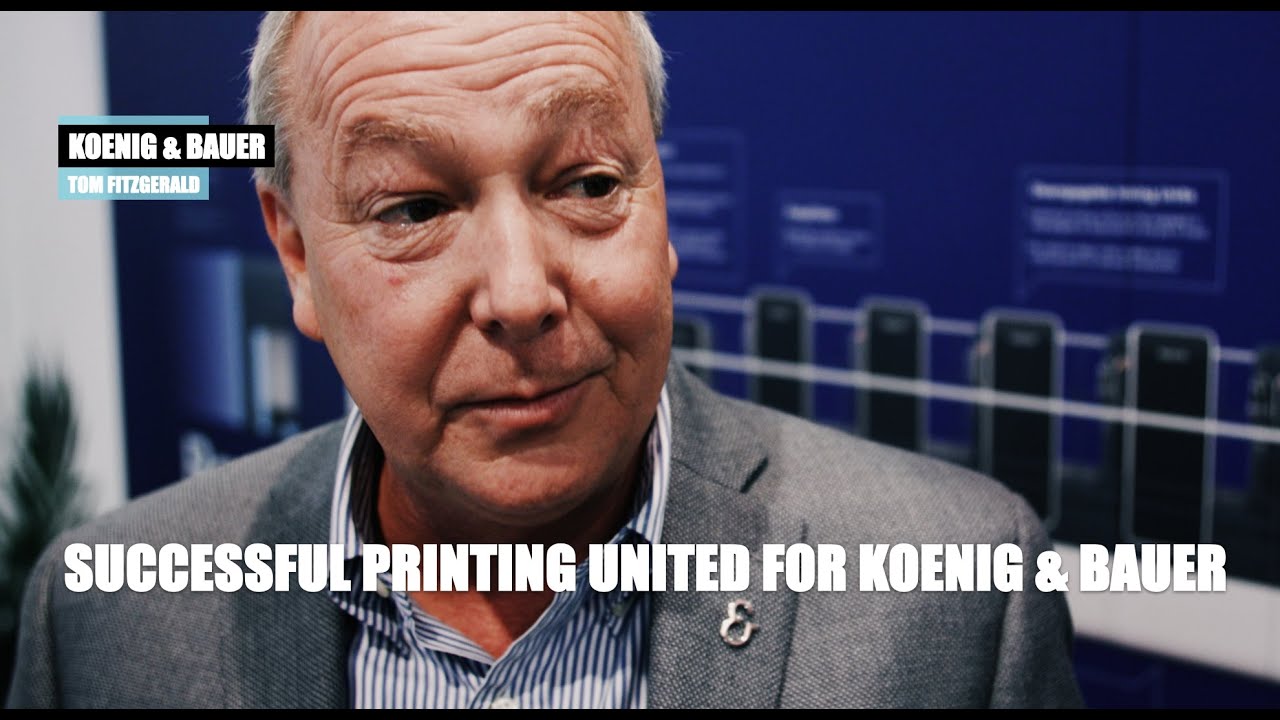Koenig & Bauer mit großer Zuversicht · Ralf Sammeck · CEO · Koenig & Bauer Sheetfed
Subtitles in English available
The Inkish@Work road tour through Germany in August 2020 initially led to Radebeul not far from Dresden. The development of printing technology has had an outstanding tradition in the region for a long time, especially due to the proximity of the book publishing and trade fair city of Leipzig.
Ralf Sammeck, CEO of Koenig & Bauer Sheetfed and as a board member at the same time Chief Digital Officer of Koenig & Bauer AG, answered questions from Andreas Weber, CEO INKISH D-A-CH.
The conversation clearly showed how you can be well prepared even in times of Corona if you follow a smart, future-oriented plan over the years, react flexibly to changes, focus on customer benefits and cultivate a great team spirit .
Ralf Sammeck made clear the benefits that can be drawn from digitalization for print. Not only with regard to the printing machines, but above all also the software / workflows, the services and the communication with customers around the globe. And how to successfully bring customers closer to their needs according to innovations and production scenarios in a new form.
The result: With its rich tradition, Koenig & Bauer now seems to be very relaxed in the fast lane. And continues it’s successful strategy to achieve success even in times of crisis.
//
Die Inkish@Work Road-Tour durch Deutschland im August 2020 führte zunächst nach Radebeul unweit von Dresden. Drucktechnik-Entwicklung hat in der Region seit langem eine herausragende Tradition, gerade auch durch die Nähe der Buchverlags- und Messe-Stadt Leipzig.
Ralf Sammeck, CEO von Koenig & Bauer Sheetfed und als Vorstandsmitglied zugleich Chief Digital Officer der Koenig & Bauer AG, stand Andreas Weber, CEO INKISH D-A-CH Rede und Antwort.
Das Gespräch zeigte deutlich, wie man selbst zu Corona-Zeiten gut gerüstet sein kann, wenn man über die Jahre einen klugen, auf die Zukunft ausgerichteten Plan verfolgt, flexibel auf Veränderungen reagiert, den Kundennutzen in der Fokus stellt und den Team-Geist pflegt.
Ralf Sammeck machte anschaulich, welcher Nutzen für Print aus der Digitalisierung gezogen werden kann. Nicht nur bezüglich der Druckmaschinen, sondern vor allem auch der Software/Workflows, den Services und der Kommunikation mit den Kunden rund um den Globus. Und wie man in neuer Form Kunden ihren Bedürfnissen gemäß Neuheiten und Produktionsszenarien erfolgreich näher bringen kann.
Das Ergebnis: Das Traditionsunternehmen Koenig & Bauer scheint sehr entspannt auf der Überholspur zu sein. Und verzeichnet durch die Fortführung seiner erfolgreichen Strategie auch in Krisenzeiten weiterhin Erfolge.
Dear Ralf Sammeck, thank you very much for letting us and our INKISH team be here today. Our conversation has a little history. We have already been able to talk to people from your team about many things. And my impression, if I may summarize it like this, for me Koenig and Bauer is totally relaxed in the fast-track and they call it deceleration today. And I think that’s a good description for me, does that also meet your expectations or do you say: “Now you’re talking us down, we’re completely different, are we not?
Yes, so first of all, thank you Mr. Weber for giving us the opportunity here today. I am very happy about it. Well, that is of course great feedback. I wouldn’t have said that we are in the fast-track. But of course I agree with you 100 percent. We have a really great team here, and we think we’ve done a lot of things right over the past few years. Which pays off even in difficult times like today. We have a very clear strategy that we have developed and have been pursuing very consistently for many years. And seen in this light, yes. You could put it like this: we are in the fast-track. But on the other hand, we are also keeping our feet firmly on the ground. After all, in the end it is crucial for us that our customers are successful. Because if our customers are successful, then we also know that we will be successful together with our customers. That is our ultimate focus.
And by decelerating I meant that I already had the impression last year at your summer event in Radebeul, where we could all still attend – . One is so unexcited. So everything that happens here is very professional. But there is no hectic rush. And that means what you said. There has been a plan for a long time. Thomas Göcke said this morning that for the past five years at least, we have been dealing specifically with the topic of digitalization and digital transformation. That needs some advance planning. And the strategy you have found is not an immediate reaction to Corona. It all started much earlier. Is that proving particularly effective now?
Yes, I think that really proves its worth. We are a company that thinks very long term by DNA. And if you take the long approach and have a clear plan, then that’s what you’ve probably experienced here. Which I am very pleased about. That there is no excitement, because we have a clear plan where we want to go and how we want to develop. Koenig und Bauer has been around for 203 years now. Of course we are also used to responding to changes in the market. But you don’t always have to jump from right to left. The decisive factor is. And I think all my employees have understood that. We in the management team also know that we have a plan that is valid for the long term, and that you then of course work on this plan in stages. And I think that perhaps shows to the outside world that we are less excited. But on the inside we are bursting with joy. Because if you look around here at what has been created here in recent years, I think it is something to be proud of. And we also get excellent feedback. And that’s much more important, from our customers, who work very successfully with our equipment and also with our solution and support.
Over here it’s Koenig und Bauer Sheetfed.And that leads you a bit on the wrong track, because there is much more going on here than just “ground offset” in quotation marks. We have learned that there are three central market segments that you can address here.
How do you cope with this complexity in the applications and the necessary developments that are made here?
We always look at it from the outside to the inside. That means we are in very close contact with our customers and we learn from our customers. Many years ago, I remember very well, we had very intensive discussions with our customers and said: “My goodness, you got the presses from us. What are services or products that we can further develop for you? And the ideas naturally also come from our customers. That they have said: Man, your printing press division is in a great position. But it would also be great with your skills in mechanical engineering that you also expand the production chain in the area of packaging, which we approach and live by very consistently. Because even back then, people wanted alternatives, and that’s how we came up with the idea: Okay, if we do have this close customer exchange and that the demand is corresponding. Why don’t we go into the subject of Post-Press? And that’s how we started with the die cutting machines four or five years ago. So we took over Iberica and then, together with our engineers and new engineers from the industry, we launched a new machine series that we presented for the first time at our digital event. For which we also received great feedback. And so it was logical that we said that we also had to offer the next production step. These are the folder gluers. And that is how we took over Duran two years ago. So today it’s Koenig Bauer Duran. And I must also say that we have had excellent cooperation and great successes with our customers. In other words: Yes, that is a lot of work we have to do here. But on the other hand, it is also a logical consequence if you want to offer your customers the best possible service. Because one is the machine, the other is the entire production line. And if you can also offer a workflow that is consistent for the entire production. That, coupled with digitalization, means that we can also provide performance support. All of this together naturally makes our customers more successful, and that is our goal, our approach. And I think we are on the right track.
For me, this means that in addition to the hardware, which is your traditional business, the software and finally the brainware was added. Because this is also a realization from this morning we had that of course digital transformation does not only mean that you can establish connectivity everywhere, but that you can of course listen and react in a completely different way using digital communication tools. And do you consider it a strength at the moment, especially in times of crisis, that you can now communicate with customers much more quickly on completely different levels?
Mr Weber, that is a very good point. And that’s exactly how it is. We are now in the Corona time, which of course is a burden on all of us and is also a business challenge. But thanks to the digitalization opportunities we started early on, we have been able to provide our customers with excellent support even in these difficult times. First of all through our Customer Community Platform, which we have. There is a direct exchange with the customers. That we are able to improve performance for our customers, but also in service. We immediately launched a 24/7 service, which not only provides electricians and technicians, but also process engineers, i.e. professional printers who know every printing problem and who are also available to our customers 24/7. Because now in the Corona time it was of course difficult to travel to the customers at all. And because of the digitalization and Visual Press Support, as we call it, we have the possibility to guide the customer through the camera and in very frequent cases, we can also repair the machine ourselves. And these were all technologies that we naturally developed early on. We have also developed the hotline, which we have continued to develop further, and can therefore provide our customers with very good support in these situations where we are currently underway.
Is there a difference between the different areas that you cover, even at the moment? The general rule is: well, commercial printing is more difficult. Packaging printing is easier and in some cases is even growing. Have you noticed that there are very different requirements when it comes to this type of service and support from Koenig und Bauer?
Yes, it is indeed so. We can see that our packaging printers, which make up a large part of our business, have a very, very good workload, often even overload. Who, of course, place particular value on these digital possibilities. And there has also been a rethink. We used to offer our services, too. But not every customer was so open to the possibilities. Now, of course, in a crisis situation, they have realized the benefits and production reliability that can be achieved with these technologies. And I can already see a change in the way people are focusing much more on digitalization, also on the customer side, than perhaps before the pandemic. And we see a different picture with commercial printers. The workload there is lower. And it’s simply more a question of how we can support them. But that’s more of an issue if the press breaks down.
Efficiency is then more of an issue.
But the big printing pressure is currently stronger among packaging printers.
And when we talk about packaging printing, we are of course talking about a topic that has been raised in the spring, namely that in packaging printing, you need large-format offset printing, sheetfed offset printing. Yes or no? And if I know it right, you are sticking to it?
Yeah, not only that. We continue to invest in large format. We have the top 30 print shops in the packaging industry, having Koenig und Bauer machines. And when I look at our customers. A great many, very, very many of them of course also have large-format presses, because there are different areas of application. There is, and I’m talking about the cereal packaging from a major manufacturer, which is produced in the millions.
And so there are of course a lot of food products or other packaging that is printed in high volumes. And the trend will carry on. Of course, there is also the other trend – shorter runs and even shorter runs for promotions, for a seasonal business. And of course there’s that too. But large format is a market where I can even see growth. And we are investing in our large-format presses and are quite happy that we have such a high market share. And that is quite clear, that is our core competence. And we will continue to be a strong player in this market.
And you mentioned that the top 30 are particularly interested in it. Certainly these top 30 will have more market share than just 30 percent. To put it in a nutshell. Is it only there that you can see the interest in large format, or also among companies that are smaller in terms of their market impact and the volume they have to handle?
Yeah. There’s that, too. We see a trend even from 3D format to large format. Because in principle, you can output twice as much with a large-format machine. And of course you can often replace two 3D machines with one large-format machine. What you have to say, of course, is that the makeready times are more or less identical. And we see a good market there. And if I look at the last few years, that is at least a stable market for us. On the contrary, we sold significantly more last year, and even now, even in the crisis situation, we are seeing no sign of any demolition. So, the large format is a very stable business for us, also with growth opportunities.
How should we imagine these intervals in terms of time? Until a decision is made to invest in large formats, right up to the point where the machine is actually tested in the factory, it is delivered, installed and commissioned. Can you give us a rough idea of the time frame?
The customer sometimes decides very quickly. When he has received a new large order and says: Oh dear, I don’t have the capacity yet. I need a machine quickly. We are always surprised that you have to see that you can quickly build a machine for the customer. But usually it’s like this: we have delivery times in the order of nine months – today. And until the machine is installed and goes into production, it naturally depends on the country. You may then have to take the machines across the big ocean. But you can say after twelve months you will be in full production from the day you order.
This means that we have to act very far-sightedly. This is also a special feature of packaging printers. This is not an ad hoc business like in commercial printing, where you can change everything overnight. Packaging printers very often develop long-term relationships with their customers. And you simply have to work with foresight. And that brings me to another topic, which was also an important aspect in our discussion and involvement with digital transformation. And that’s not just customer centricity. That is an expression of will. But it is when it works, and the trust that builds up. And I would list this, along with the fast-track, as the second important realization of mine today. The trust that you have in your customers, but of course also your customers have in you. Is this something that happens alongside or do you work on it specifically and take care of each other just like in a good marriage?
This is just like in a good marriage. We are in a very close exchange with our customers, and I would say that one of our specialties is that we deal with our customers very intensively to find out what they really need. What are the development opportunities that the client sees for his next five years? How can we support him there? From the mechanical engineering point of view, that we offer him a caste, mostly machines, that really give him a competitive edge. And also savings and, on the other hand, of course, what services can we offer to support him? Because one thing, of course, is to install the press and say good luck. The other side, which we of course do very often and very intensively, is to say: Here is the press. And now we will accompany you, dear customer, so that you really get the most out of the press. And here we are in very close contact, also in regular exchange. So now it’ s not just instruction and then you say goodbye. But that you always follow up with the customer on a regular basis. What is the problem? Where can we support? We always have new products in the field of digitalization. That we can offer new products, also on our Customer Community, which we then present to customers to offer them further support. It’s a bit like marriage, you have to be in constant communication with the customer, and we do that regularly. It’s not every seven or eight years that there’s a conversation because a new machine is due, but a permanent exchange. And I always say: Today we see ourselves as Trusted Advisors and not someone who builds a printing press. And the Trusted Advisor always has one goal: that the customer is successful. And with this approach, we naturally try to support our customers throughout the entire life cycle of the press or presses not only in printing, but also in post-press and, yes, even digitally.
And is there a bit of this effect as well? Because I can imagine very well what you say. And so I have known Koenig und Bauer for more than 30 years that they respond to customers very individually and specifically. Back then, I had to deal with one of your customers near Frankfurt. With a standard machine, a sheet-fed gravure press, he developed a specialty, together with your engineers, ceramic gravure. So he could do printing on ceramics. And I found that very fascinating, because I thought that’s actually hardly possible. Normally you have to buy off the shelf and see that you do what everyone else does. And is that a bit of the bee-flower effect that you have in mind? This customer center idea, which is now available here, not only allows customers to get to know what they are doing anyway, but also to be inspired. Are other areas of application also interesting for me? Is this something you actively promote? Or is it something that just happens because a customer is interested?
No. We actively promote this. And you can actually see that here at our location. After all, we’ve put a lot of money into this. With our Customer Experience Center, we’ve perfected and pursued this very idea of saying that we want to advise our customers even better so that they have this competitive advantage. And you can see that here in Radebeul. We have a Customer Experience Center just for packaging, literally the workflow, which includes pre-press, press and post-press. So the whole track has been built up here to achieve exactly what you’re saying, that we can give the customer ideas and give new ideas on how to position themselves even better in the market. We do the same in another building for the label industry and also for commercial printers. In other words, we focus specifically on the individual customer groups. And the goal is to give customers new ideas and support them in ensuring that they are optimally positioned. That is our concern, and that is why we have made these investments here.
And if I may ask bluntly, this actual topic of digital transformation. Since April, I believe you have also become Chief Digital Officer for the Group, which is proof somewhere that you are doing quite well for Sheetfed, apparently. And now you have to transfer it. Are these topics of digital transformation always part of the discussions with customers? Is this something that customers welcome and ask for? Or is it something along the lines of what the English or Americans would say: Just happens?
So the first years, I must say, it was the case that the customers did not yet have that kind of access. Then it developed very slowly with the customers. And in the meantime it has to be said, also accelerated by the Corona situation, that the customer sees more and more of the added value. Let me give you an example: We have a large American customer who challenged us, fortunately, I have to say, and said: Man, we have machines from you, and we have different plants. Could you support us even better there? Of course we said: Yes, absolutely! We also have possibilities in the area of digitalization, performance, reporting, benchmarking and so on. We played the whole piano. And indeed, the project ran for three quarters of a year, approximately, and we were able to achieve a performance increase of, differently for each location, but between ten and 15 percent. Of course the customer continued to buy machines from us afterwards. And I would say that this Trusted Advisor approach simply shows that. We want to be your partner, we want to help you. That is of course a very decisive aspect of digitalization, and one that customers are increasingly accepting. And we want to offer our customers even more.
Does that mean that if this interaction with the customer, this cooperation, intensifies, does that also have an influence on the innovation behavior in your company and the speed of innovation? Because this morning it occurred to me that you always think of six to twelve months in the software sector. In that case, something is completely developed. In the hardware area it was 18 to 24 months. The pace of innovation has become much faster here. Is it more of an advantage or disadvantage if customers can push more effectively than before?
So I think that’s an advantage and of course we’ve seen some changes in our company. Because you can’t see it as a project in mechanical engineering. You have to take the agile approach. That means that you can’t just develop a product, i.e. develop a software product, and then introduce it until it is ready. Because then you are three years older or four. Instead, you have the agile approach of cutting a product into slices and introducing each slice individually into the market and correcting it immediately when you get feedback from the customer, where there may be a certain dissatisfaction. We have this agile approach. It works very well. We also have a close exchange with various customers who test things for us. And from that point of view, yes, it has accelerated considerably.
If we can add a little more to this topic of digital transformation or this extended area of responsibility for the Group. I would find that particularly exciting. Is Sheetfed at the forefront of this, and are other areas already on an equal level? What are the differences, or what is actually the central task you have now, when you have to roll out to the entire group, so to speak?
The other business units haven’t slept in either, of course, and have developed things that we might not have had our eyes on before. And of course we have already invested very heavily in the last few years and have gone very strongly in this direction. That means two tasks. One task is what we have already implemented and to transfer the projects we are working on. Where it makes sense, to the other business units. But it’s just as good to bundle ideas from the other business units and then explore them. What are products that we want to develop further, where we might even go in with more money? Or what are products that may not be worthwhile? It is a coordination, but of course also an acceleration of all the ideas in order to offer additional valuable products to our customers.
This means that within the framework of this, something like an exchange of knowledge and work takes place, because I find this exciting. I am always amazed at the breadth of Koenig und Bauer’s expertise in print technology. I don’t know any other company that is truly as multi-faceed as Koenig und Bauer.
We have not even addressed digital printing yet.
Yes, exactly.
Is also a very exciting thing.
And I imagine this to be exciting, also for the benefit of the customers. Of course I wanted to talk about digital printing. It’s obvious that Koenig und Bauer doesn’t think you have to reinvent the wheel for the fifth time, but is very cooperative, willing and able. And you have a joint venture, a joint venture with the Durst Group. And perhaps you can tell us again. What is so special about it? Because the business there cannot necessarily be compared with the classic Radebeul business.
Yes, this is also a project, I must say, a joint venture that we have founded with the Durst company, which promises a lot. And we have been working very closely together for one and a half years now. From the Sheetfed side, the project is the VariJET, and the VariJET has been developed considerably in a very short time with the high level of expertise that Durst has, so we are also planning to launch it on the market next year. And the results we are achieving with the technology are really outstanding. The cooperation works very, very well. But of course not only the Sheetfed Business Unit, but also with the other Business Units, i.e. Digital and Web, everything corrugated, i.e. corrugated board. Here too, of course, we have our joint venture, the projects together. And that is really a great cooperation. I’m very excited when we introduce the machine or machines to the market. We believe in digital printing, and I think that’s very important, because you’ve heard one or two things in the press from other companies. We believe in it, we invest in it, and we will enter the market with the VariJET. This is a machine for the folding box printer. And we have a very special approach to it, it is a pure digital machine or a hybrid solution. In other words, with our technology you can combine digital with offset and flexo. And that’s the special feature, and that’s how we achieve a TCO that is extremely interesting. Is this joint venture, the Koenig und Bauer-Durst company, is it a pure development company or do they also take care of marketing, sales and everything else?
Yes, but this is clearly divided. For the VariJET, for example, because it’s the folding carton customers that are concerned, the Sheetfed organization will take over sales and also service. The development is a joint development. So we do everything that has to do with paper transport and dryer technology. And our partner Durst, is responsible for the entire digital sector. And this is clearly defined who has which competence.
The cooperation works really well.
You look so satisfied. Is something wrong?
Everything is perfect. Well, I must also say that I am having a lot of fun. And above all, I also enjoy working with my team. Because one thing must also be said, everything you have seen here, the new products. The fireworks that we have lit up here are quite a show. Whether it’s the printing press, whether it’s Post-Press, with the new folder gluer, with the new die cutters, rotary die cutters or even flatbeds. These are all new developments. And then there is the topic of digitalization. I think we have made a lot of progress in this area in recent years. And in this respect, yes, I am satisfied.
That can never hurt. If only the fairy would come along now and say: Dear Ralf Sammeck, you have three free wishes. What would that be?
I would say make me 15 years younger again. Then I could still.
The wish can be fulfilled.
No. I’m pretty much happily ever after, I have to say. Of course it is also important that your own team, your own family, stays healthy. Of course, we have focused a lot on taking care of our staff, in this difficult situation. It would of course be nice to have a quieter time, because one thing is clear. In the end we have to achieve results. We are well underway. If you can say that in a crisis, if you look at VDMA, for example: mechanical engineering for the printing industry down 36 percent. Incoming orders after five months, we are down twelve percent. After six months. So compared to the industry, we are well underway, very well in fact. But still, nobody needs a crisis like this. And that’s something I’d like to see people get back into normal waters.
I think this is especially important for your business. You shouldn’t look so much at the turnover. After all, the key figure is the order intake, and 36 or sometimes 44 percent of orders are almost threatening to the very existence of the company.
True, yes. And there we are with 12.9 to be exact, now at Sheetfed less than last year. And last year was a really good year, I have to say. We are very successful in that respect compared to others.
Then I thank you. I think we have reached the end of our time credit. It was again very interesting to get those extra views. If you want to say something now that you always wanted to say but didn’t dare to. You can do it. Otherwise, thank you very much for the open conversation in this interesting environment. And I’m afraid we’ll meet again.
Yes. And I would like the crisis to pass quickly. For our customers in the first place, but of course also for everyone involved in the printing industry.
I agree with that.
Thanks a lot, Mr. Weber for the pleasant conversation.
Thank you, Mr Sammeck.
































































